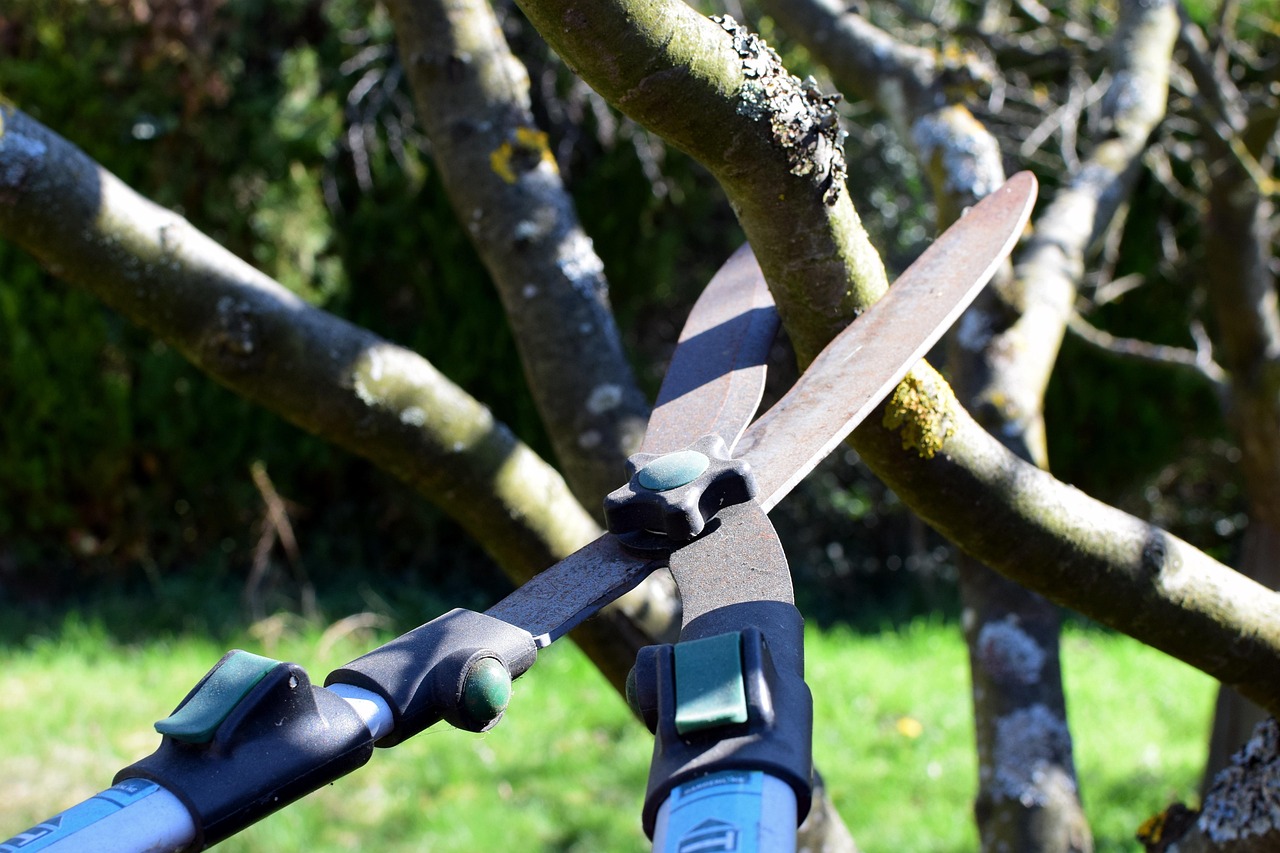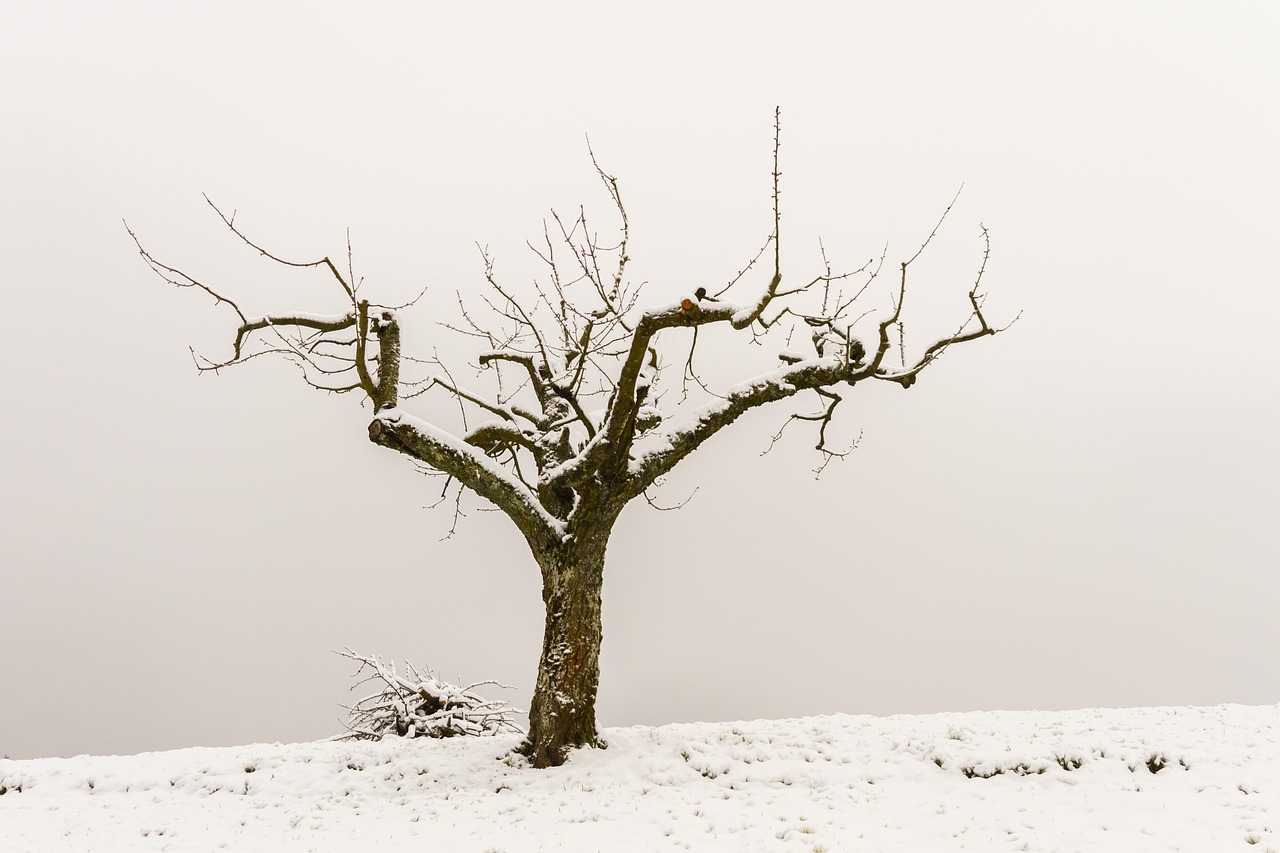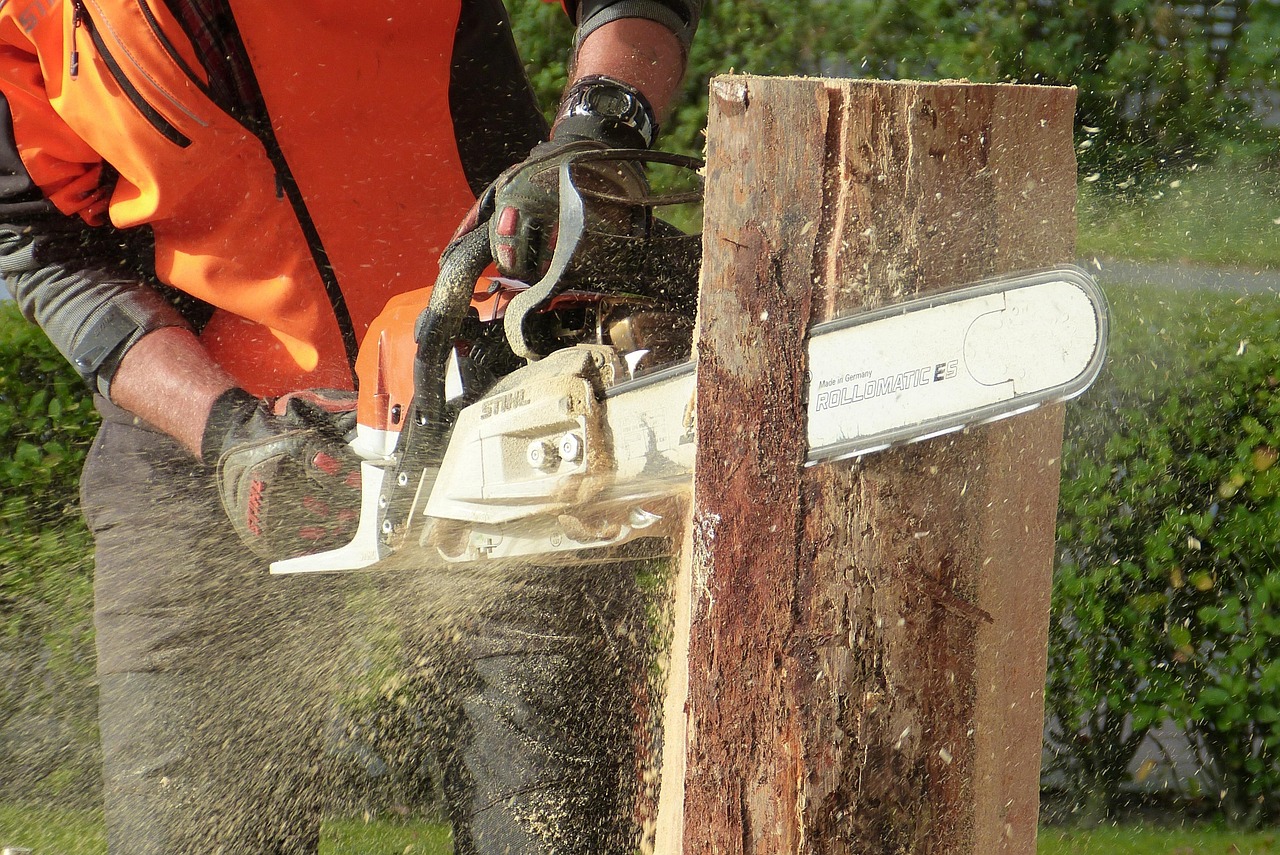Effective tree pruning practices vary by season, focusing on timing and technique to promote healthy growth. Spring is ideal for shaping and removing dead branches, while summer helps to control growth. Fall is a time for maintenance, and winter is best for major structural changes.
Tree pruning is an essential practice for maintaining the health and aesthetics of trees. It involves the selective removal of specific parts of a tree, such as branches, buds, or roots. Proper pruning encourages healthy growth, improves air circulation, and enhances the overall appearance of the tree. Additionally, it can help prevent disease and pest infestations, ensuring the longevity of the tree.

Understanding the seasonal aspects of tree pruning is crucial for effective results. Each season presents unique conditions that affect how trees respond to pruning. Factors such as tree species, growth patterns, and local climate conditions play a significant role in determining the best time and method for pruning.
Understanding Tree Growth Cycles
Trees experience different growth cycles throughout the year, influenced by changes in temperature, sunlight, and moisture levels. Recognizing these cycles can help you determine the appropriate time for pruning. Here are some key points to consider:
- Spring: Trees begin to grow new leaves and flowers. This is a time of active growth.
- Summer: Trees are in full leaf and growth can be vigorous. This period is suitable for minor adjustments.
- Fall: As trees prepare for winter, they start to slow down their growth.
- Winter: Trees are dormant, making it a suitable time for major pruning work.
Each of these seasons offers unique opportunities and challenges for pruning. By aligning your pruning efforts with the natural growth cycles of your trees, you can ensure more effective outcomes.

Pruning in Different Seasons
Spring Pruning
Spring is often considered one of the best times to prune many tree species. As trees wake from dormancy, they begin to push out new growth. Pruning during this time can encourage strong new shoots and enhance flowering. However, it is vital to wait until after the threat of frost has passed.
The advantages of spring pruning include:
- Improved air circulation, reducing the risk of disease.
- Encouragement of strong new growth.
- Enhanced flowering potential for certain species.
Summer Pruning
Summer pruning is typically done to control growth. It is effective for shaping trees and removing unwanted branches that may impede light or air flow. This practice can also help redirect energy to more desirable areas of the tree.

Key considerations for summer pruning include:
- Pruning during dry weather can reduce the risk of disease.
- Summer pruning can help reduce the overall size of the tree.
- It allows for better visibility of any pest issues that may arise.
Fall Pruning
Fall is a transitional period where trees prepare for winter. While it is generally safe to prune during this season, caution is needed as trees begin to enter dormancy. Minor maintenance can be performed, but major cuts should be avoided to prevent stress on the tree.
Advantages of fall pruning include:

- Allows you to assess tree health before winter.
- Can help with shaping before the dormant season.
- Reduces clutter and deadwood that can attract pests.
Winter Pruning
Winter is often viewed as the ideal time for major pruning tasks. During this period, trees are dormant, making it easier to see their structure without leaves obstructing your view. Winter pruning can lead to vigorous growth in spring as trees respond positively to the cuts made during dormancy.
Benefits of winter pruning include:
- Reduced stress on trees due to dormancy.
- Easier visibility of branch structure and dead wood.
- Promotes vigorous growth in spring after cuts are made.
| Season | Best Practices | Key Benefits |
|---|---|---|
| Spring | Remove dead branches; shape new growth | Encourages flowering; improves air circulation |
| Summer | Control growth; thin out crowded branches | Enhances light exposure; reduces size |
| Fall | Minor maintenance; assess health | Prepares trees for winter; reduces pest attraction |
| Winter | Major structural cuts; remove dead wood | Easier visibility; promotes spring growth |
By understanding these seasonal dynamics, you can make informed decisions about when and how to prune your trees effectively throughout the year.
Essential Tools for Tree Pruning
Having the right tools is crucial for effective tree pruning. Using appropriate equipment not only makes the job easier but also ensures that you make clean cuts, which can prevent damage to the tree. Here are some essential tools that every gardener should consider for pruning:
- Hand Pruners: Ideal for small branches, hand pruners allow for precise cuts and are perfect for shaping trees.
- Loppers: These are larger than hand pruners and can cut thicker branches. They provide more leverage and are suitable for branches that are up to two inches thick.
- Saws: For larger branches, a pruning saw is necessary. These saws are designed to cut through thick wood efficiently.
- Pole Pruners: These extendable tools are great for reaching high branches without the need for a ladder.
- Safety Gear: Always wear gloves, safety glasses, and sturdy shoes to protect yourself while pruning.
Choosing the Right Tools
When selecting tools, quality matters. Investing in durable and well-made equipment can save you time and effort in the long run. Consider the following when choosing your pruning tools:
- Material: Look for stainless steel blades as they resist rusting and hold an edge longer.
- Comfort: Choose tools with ergonomic designs that fit comfortably in your hand.
- Weight: Lighter tools can reduce fatigue during long pruning sessions.
Pruning Techniques for Different Tree Types
Different tree species have unique growth habits and requirements. Understanding these differences is vital for effective pruning. Here are some common tree types and appropriate techniques for each:
Deciduous Trees
Deciduous trees lose their leaves in winter and often require significant pruning in late winter or early spring. The main techniques include:
- Thinning: This involves removing several branches to allow more light to penetrate the canopy.
- Heading Back: Cutting back stems to a bud or lateral branch encourages branching and denser foliage.
- Crown Reduction: Reducing the height or spread of the tree by cutting back main branches to lateral branches.
Evergreen Trees
Evergreens retain their foliage year-round. Pruning is typically less aggressive, focusing on maintaining shape. Common techniques include:
- Pinching: Removing the tips of new growth can encourage denser foliage.
- Selective Pruning: Removing specific branches to maintain shape while preserving the overall structure of the tree.
Bushes and Shrubs
Bushes and shrubs require different approaches compared to trees. The main techniques include:
- Rejuvenation Pruning: Cutting back older plants to ground level can stimulate new growth and improve overall health.
- Shearing: This technique creates a uniform shape but should be done sparingly to avoid compromising plant health.
Common Mistakes to Avoid When Pruning
Pruning can lead to severe damage if not done correctly. Here are some common mistakes to avoid:
- Pruning at the Wrong Time: Timing is crucial. Pruning during inappropriate seasons can stress trees and affect their growth.
- Over-Pruning: Removing too much foliage can leave trees vulnerable. Always follow the one-third rule: do not remove more than one-third of a tree’s canopy at once.
- Improper Cuts: Making jagged cuts or tearing bark can invite disease. Always aim for clean cuts just above a bud or branch collar.
The One-Third Rule
This rule suggests that you should never remove more than one-third of a tree’s canopy in a single pruning session. Following this guideline helps prevent shock and encourages healthy regrowth. By being mindful of how much you prune, you ensure that trees maintain their strength and vitality.
Maintenance After Pruning
The work doesn’t end once you finish pruning. Proper maintenance after pruning is equally important for ensuring tree health. Here are some steps to follow:
- Clean Up Debris: Remove all cut branches and leaves from around the base of the tree to prevent pest infestations.
- Inspect for Diseases: After pruning, check the tree for signs of disease or infestation that may need attention.
- Watering: Ensure that trees receive adequate water, especially during dry periods following pruning.
Caring for your trees after they have been pruned helps to promote healing and encourages robust growth in the upcoming seasons.
This section has covered essential tools, techniques for different tree types, common mistakes, and maintenance after pruning. With this knowledge, you are better equipped to approach tree pruning throughout the seasons with confidence and skill.
Signs of a Healthy Tree
After pruning, it is important to monitor the health of your trees. A healthy tree will show signs of vigorous growth and resilience. Understanding these signs can help you identify whether your pruning practices are effective. Here are some indicators of a healthy tree:
- New Growth: Look for fresh leaves, buds, or shoots, which indicate that the tree is responding positively to pruning.
- Even Canopy: A well-balanced canopy with evenly distributed branches suggests that the tree is healthy and has been pruned correctly.
- Strong Color: Vibrant green leaves and healthy bark color are clear signs of a thriving tree.
Common Tree Diseases and Pests
Monitoring your trees for diseases and pests is crucial for their long-term health. Identifying problems early can lead to more effective treatments. Here are some common issues to look for:
- Leaf Spot: Circular brown or black spots on leaves can indicate fungal infections.
- Pest Infestations: Look for visible insects, such as aphids or spider mites, which can weaken trees.
- Bark Damage: Cracked or peeling bark may be a sign of pests or diseases affecting the tree’s vascular system.
Seasonal Considerations for Tree Health
Each season brings unique challenges and opportunities for tree health. Understanding these seasonal considerations can help you maintain your trees effectively throughout the year. Here’s how to care for your trees in each season:
Spring Care
As trees awaken from dormancy, they require special attention. Here are some spring care tips:
- Fertilization: Apply a balanced fertilizer to support new growth.
- Mulching: Add mulch around the base of the tree to retain moisture and suppress weeds.
- Watering: Ensure trees receive adequate water as temperatures rise and growth begins.
Summer Care
Summer is a time of active growth, so maintaining health is key. Consider these tips:
- Regular Watering: Keep the soil consistently moist, particularly during hot spells.
- Pest Monitoring: Check for pests regularly. Early detection can prevent larger infestations.
- Pruning: Make minor adjustments to shape and control growth during this season.
Fall Care
As trees prepare for dormancy, focus on preparing them for winter conditions:
- Final Pruning: Finish any necessary pruning before the trees go dormant.
- Mulching: Apply a thicker layer of mulch to protect roots from freezing temperatures.
- Pest Control: Treat any remaining pest issues to ensure they do not survive the winter.
Winter Care
Winter presents unique challenges. Here’s how to care for your trees during the cold months:
- Avoid Pruning: Limit pruning activities as trees are dormant and vulnerable to stress.
- Inspect for Damage: Check for broken branches or damage from snow and ice accumulation.
- Watering Needs: If conditions are dry, ensure that trees have adequate moisture before the ground freezes.
The Role of Soil Health in Tree Growth
The health of the soil directly impacts the growth and vigor of trees. Healthy soil provides essential nutrients and improves water retention. Here are some key aspects of soil health to consider:
- Nutrient Balance: Ensure that your soil has a balanced mix of nitrogen, phosphorus, and potassium to support tree health.
- PH Levels: Test soil pH regularly. Most trees thrive in slightly acidic to neutral pH levels (6.0 to 7.0).
- Organic Matter: Incorporate organic matter such as compost to improve soil structure and nutrient availability.
The Importance of Aeration
Aeration allows air, water, and nutrients to penetrate the soil more effectively, benefiting tree roots. Compacted soil can restrict root growth and water absorption. Consider aerating your soil if you notice poor growth or standing water around your trees.
Environmental Factors Affecting Tree Growth
A variety of environmental factors can influence tree health and growth patterns. Understanding these factors can help you make informed decisions about pruning and care:
- Sunlight: Trees require adequate sunlight for photosynthesis. Ensure that surrounding vegetation does not block light.
- Moisture Levels: Both overwatering and underwatering can harm trees. Monitor rainfall and adjust watering accordingly.
- Temperature Extremes: Protect trees from extreme temperatures by providing shade or windbreaks when necessary.
The interplay between proper pruning techniques, seasonal care, soil health, and environmental factors creates a comprehensive approach to maintaining healthy trees. With this knowledge, you can make informed decisions that promote robust growth throughout the seasons.
Additional Considerations for Successful Pruning
While understanding seasonal practices, tools, and techniques is vital for effective tree pruning, there are additional considerations that can enhance your overall pruning strategy. Here are some final points to keep in mind:
Local Regulations and Guidelines
Before undertaking any major pruning, it is important to be aware of local regulations or guidelines concerning tree care. Some municipalities have specific rules regarding tree pruning and removal, especially for certain species or trees located in public spaces. Familiarizing yourself with these regulations can help you avoid potential fines or complications.
- Protected Species: Certain trees may be protected by law, requiring permits for any form of pruning or removal.
- Community Programs: Many areas have community programs that provide guidance or assistance for tree care, including pruning.
- Professional Help: If unsure about local laws, consulting with a professional arborist can provide clarity and ensure compliance.
Recognizing Stress Signs
Stress can manifest in various forms in trees. Recognizing these signs early can help you take corrective actions. Common indicators of stress include:
- Wilting Leaves: Leaves that droop or appear limp can indicate water stress.
- Color Changes: Yellowing leaves may suggest nutrient deficiency or overwatering.
- Branch Dieback: Dead or dying branches can indicate disease or environmental stressors.
By monitoring these signs, you can adjust care practices to support recovery and maintain tree health.
Long-Term Management Practices
Effective tree care extends beyond just seasonal pruning. Implementing long-term management practices will help ensure your trees remain healthy and vibrant over the years. Consider these ongoing practices:
- Regular Inspections: Conduct regular visual inspections of your trees to catch any issues early.
- Soil Testing: Perform soil tests every few years to monitor nutrient levels and pH balance.
- Consistent Watering Schedule: Establish a watering schedule based on seasonal needs, adjusting for rainfall and temperature changes.
Final Thoughts
Tree pruning is both an art and a science that requires careful consideration of timing, technique, and ongoing care. By following seasonal guidelines and understanding the specific needs of different tree species, you can promote healthy growth and enhance the beauty of your landscape. Remember to equip yourself with the right tools, stay informed about local regulations, and monitor the health of your trees throughout the year.
The knowledge gained from this comprehensive guide empowers you to make informed decisions about tree care. Whether you are a seasoned gardener or a novice, effective tree pruning practices will benefit your trees’ health and longevity. Embrace the changing seasons as opportunities to nurture your trees, ensuring they thrive for years to come.
In summary, effective tree pruning practices include:
- Understanding seasonal dynamics for optimal timing.
- Selecting proper tools for efficient pruning.
- Acknowledging the unique needs of different tree types.
- Monitoring tree health and addressing issues promptly.
- Implementing long-term management strategies for sustained growth.
By applying these principles, you can foster a thriving ecosystem within your landscape while enjoying the beauty and benefits that healthy trees bring to your environment.
